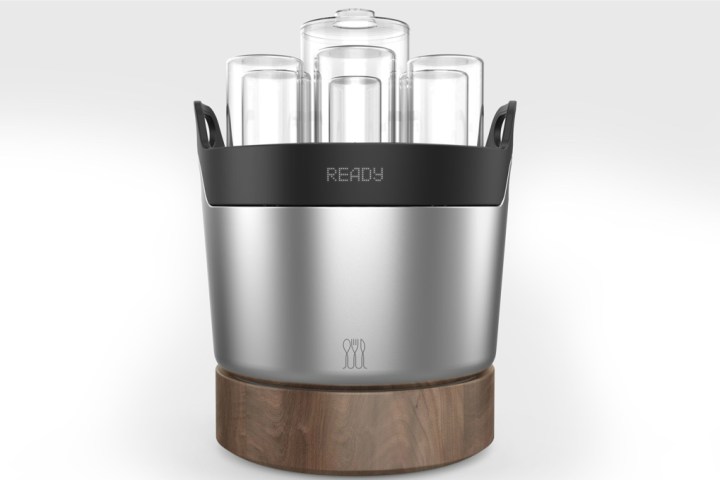
Heralded as a “smart internet-connected automatic cooking machine that will define the future of cooking,” this slow cooker wants to help you “discover new foods, simplify an otherwise hectic schedule, or provide a means to give your family a healthy diet.” Matter proclaims that Oliver has something for everyone. And because the beauty of slow cookers and their associated recipes lie in the set-it-and-forget-it approach, you don’t have to babysit your food — just go live your fast-paced life and then come back to a slow-cooked meal.

Originally presented on Qatar’s Stars of Science by inventor Khalid Aboujassoum, the device was initially envisioned as a multi-chambered device that would release different ingredients at different times to ensure a consistent cook. But Adam Leonards, a creative director at Matter, wanted to take the slow cooker to the next level, both functionally and aesthetically. And so, the Oliver was born.
The app is integral to the slow cooker’s abilities. To begin, search the recipe database that comes complete with dishes from across the world. The app will tell you what ingredients you’ll need and how to prep them before setting them into the six different compartments found on the “lid” of the Oliver. This separation is key, as cook times vary among ingredients, and you don’t want a raw potato to come out alongside overcooked steak.
Next, place the canisters and its lid atop Oliver’s pot, which sits on a warming element. From there, the kitchen appliance will do all the rest, and you’ll just need to keep tabs on the backlit LED countdown clock.
“I think there’s a broader general movement, especially in Western cultures, to be more connected to the food we put into our bodies as well as in the cultural part of sharing a meal with friends and family,” Max Burton, Matter’s founder and chief designer, told Co.Design. “People want those things, but they don’t want to lose the convenience. They also don’t want it to be difficult and challenging. It’s a fine line this product resolves.”

So if you’re looking for something to make at your next dinner party and something to make it in, keep an eye on the Oliver.
Editors' Recommendations
- Mars helicopter Ingenuity powers through its 21st flight
- How to use a crockpot: 12 Do’s and Don’ts
- Land Rover gives the emblematic Defender a 21st-century makeover


